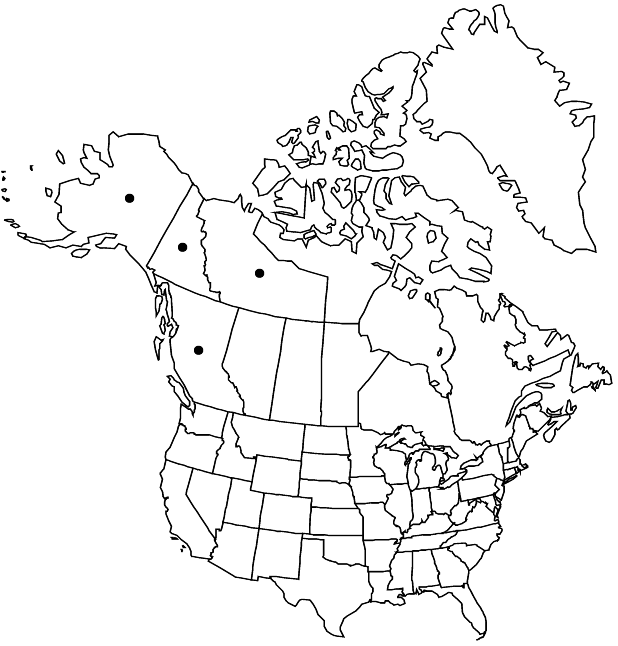Diapensia obovata
Trees Shrubs Japan 1: 194. 1922 ,.
Plants usually forming mats or low mounds or cushions (not tussock-forming), 2–5 cm; branches procumbent or decumbent, adventitiously rooted, proximal portions of stems with or without persistent leaf remnants. Leaves 3–8(–12) mm; blade obovate to spatulate-elliptic, 1.5–2.2(–3) mm wide, margins narrowly revolute, usually herbaceous, sometimes with narrow hyaline flange. Pedicels 5–20 mm, elongating to 30–50 mm. Flowers: sepals 4–7 mm; corolla 7–9 mm, lobes usually white, sometimes light pink or rose. Capsules 3–4(–6) mm diam. 2n = 12.
Phenology: Flowering Jun–Jul.
Habitat: Tundra, alpine heath, subalpine meadows, slopes and ridges, dry or moist areas, gravel, silt (run-off banks)
Elevation: 500-1500 m
Distribution

B.C., N.W.T., Yukon, Alaska, Asia (Japan, Korea, Russia [Kamchatka], e arctic and subarctic Siberia).
Discussion
Justifying his recognition of Diapensia obovata at subspecific rank, E. Hultén (1941–1950, vol. 8) wrote that “it seems to me to be a clear geographical race of D. lapponica and should be regarded as a subspecies.” Among relatively recent accounts to include both taxa, Hultén (1968), H. J. Scoggan (1978–1979, part 4), and W. J. Cody (2000) treated them as subspecies; B. K. Schischkin (1952) and A. E. Porsild and W. J. Cody (1980) treated them as distinct species.
The two taxa differ consistently in morphology, especially in growth form. In leaf shape, they are generally distinct, although their ranges of variation overlap. P. J. Scott and R. T. Day (1983) observed that they differ significantly in leaf length/width ratio—2–2.5 in subsp. lapponica versus 2.75–2.8 in subsp. obovata—but that the “distinction between the subspecies breaks down where they nearly meet in the Northwest Territories of Canada.” Maps by E. Hultén (1968) and A. E. Porsild and W. J. Cody (1980) indicate that the two taxa are separated in range by about 1000 kilometers. Each in its characteristic form is distributed over a broad area, and, in the view here, meets the morphogeographic criteria generally used for plant species.
Selected References
None.